Today is the start of New Student Orientation week at the University of PEI and Oliver is diving in with all feet.
As I write he is off on a campus tour while I chill in the parent lounge and drink coffee from my parent mug.
Thirty-five years ago this week I was in Oliver’s shoes; I told him, as we were cycling up to campus this morning, that I felt nervous, to which his response was “what have you got to be nervous about?!”
I am, indeed, a proud UPEI parent.

It’s not every day your primary client is on the front of the local newspaper, so today’s a day to celebrate: the cover of The Guardian this morning was graced by a story, Chilling forecast, about the 2020 edition of The Old Farmer’s Almanac.
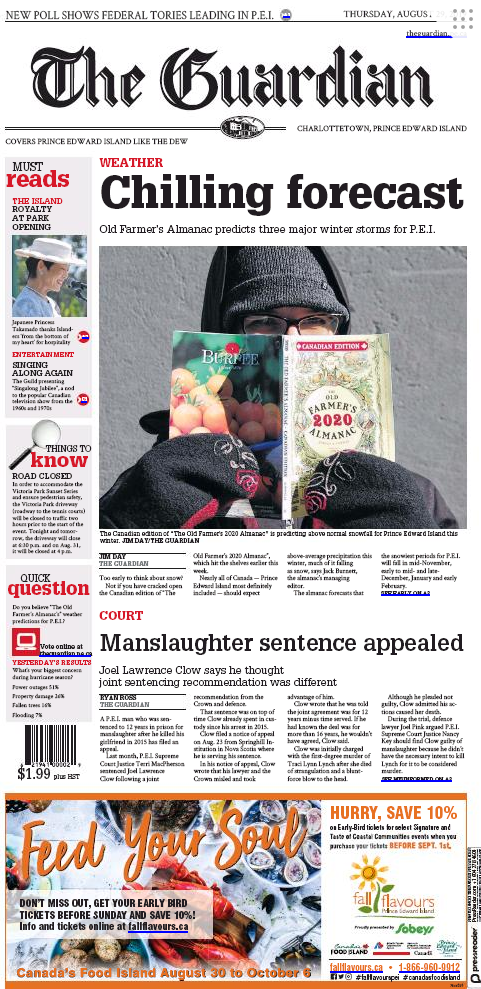
My work with The Old Farmer’s Almanac started many years ago when Almanac.com first went online; this is the 23rd year I’ve helped launch the digital companion to the printed book. The team I work with in Dublin, New Hampshire has evolved over the years, but they’ve always been fun to work with, and the work has always been challenging.
Here on Prince Edward Island you can buy your copy of the 2020 edition of The Old Farmer’s Almanac at:
- The Bookmark
- Indigo
- Atlantic Superstore
- Home Depot Canada
- Home Hardware
- Lawton Drugs
- Michael’s
- Princess Auto
- Shopper’s Drug Mart
- Sobey’s
- Walmart
When you buy a copy you’re not only getting a venerable yearly companion, but you’re also supporting my little business.
And I will buy your radishes. Thank you.
Catherine, who heretofore I’d never seen drink a glass of chocolate milk even once in 28 years, has suddenly gone gangbusters for it. Cancer meds work in mysterious ways.
Fortunately Purity Dairy is but a hop, skip, and jump away. I’ll need more storage on the bicycle if this keeps up though.
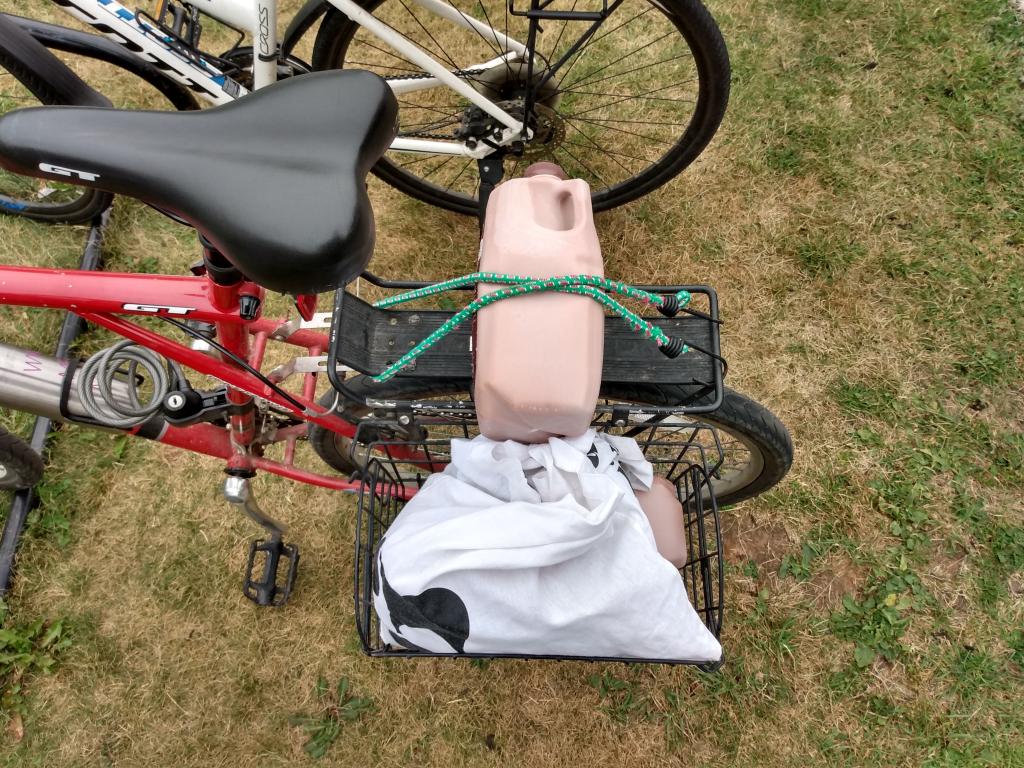
The City of Charlottetown recently announced a program to incentivize local businesses to install bicycle racks:
The City of Charlottetown is offering a cost sharing incentive to provide local businesses an opportunity to install a bike rack at their establishment.
The four bike rack costs $425.00 plus HST, which would be cost shared at $212.50 plus HST each. Installation and maintenance costs for the lifetime of the bike rack would be the responsibility of the partner.
The City has capacity for twenty establishments to partner with for the 2019/20 budget year. Interested businesses can learn more or register online at: www.charlottetown.ca/cycling
I’ve been making a determined effort, this cycling season, to replace all my car trips with bicycle trips: where I used to go to the grocery store, pharmacy, hospital, hardware store, and the farmers’ market by car, I now take my bicycle.
As soon as I started to do this in earnest, I started to notice that there are some businesses with great bicycle parking infrastructure (Receiver Coffee Brass Shop, Upstreet, Murphy’s Parkdale Pharmacy, Sobeys) and some businesses with no place to park a bicycle at all.
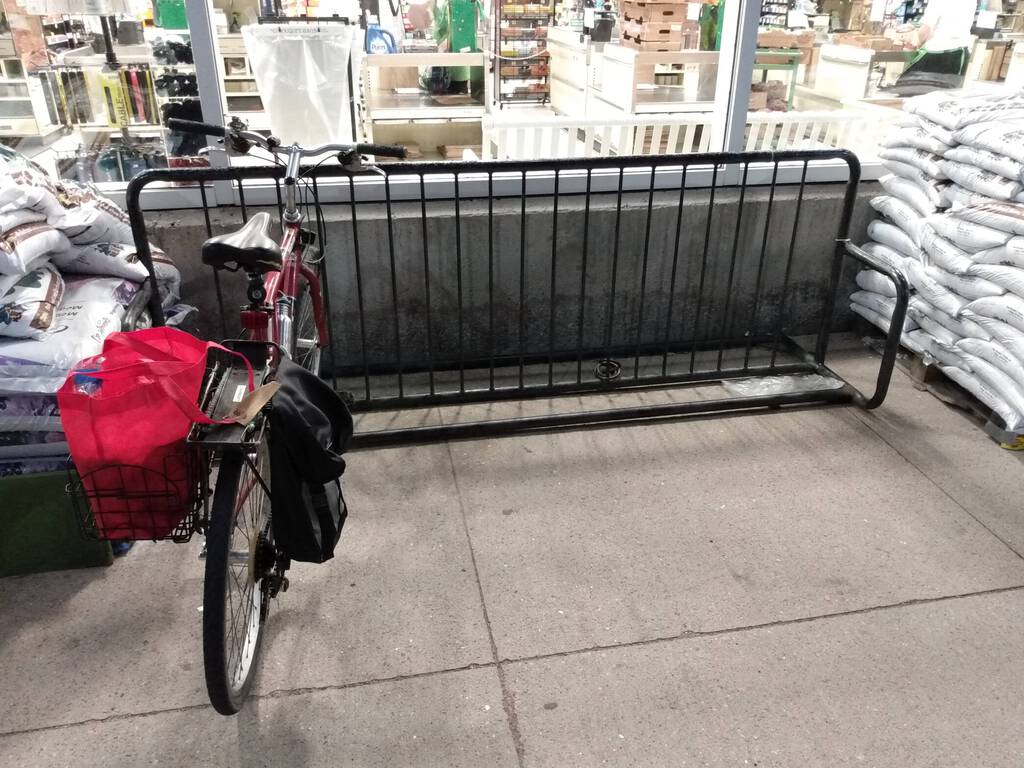
The large bicycle rack at Sobeys on Allen Street.
The single best way to advocate for better bicycle infrastructure at local businesses is to ask them to take advantage of this program.
As part of the ask, make it clear that you’re doing so as a customer-who-cycles. This turns your request from an environmental decision into a business one: businesses want their customers to be happy, and they want patronage to be convenient. Looked at through that lens, spending $200 on a bicycle rack is a no-brainer.
Let’s get this program fully subscribed before the end of the month.
Although Art in the Open 2019 was a cavalcade of artistic wonders, my favourite part of it was the portable printmaking studio set up on Victoria Row by St. Michael’s Printshop from St. John’s, Newfoundland and Labrador.
I was trying to explain to someone last night the difference between printmakers and printers, and I suggested that it was kind of like they’re Portuguese and we’re Spanish. To the casual observer we’re easily confused with each other, and, indeed, it’s possible to make yourself understood speaking one language to a native speaker of the other. But we’re different nations with different traditions, different sensibilities, different terminologies.
But, that all said, we’re all Iberians, so to speak, as our alchemy involves ink, paper, form and pressure. And so I loved spending time in their midst.
The portable printshop was setup up to print on anything you might bring along with you, using one of a fleet of woodcuts that they traveled with.
I brought along a piece of scrap canvas, and selected this stunning cut by Newfoundland artist Kim Greeley for my print:
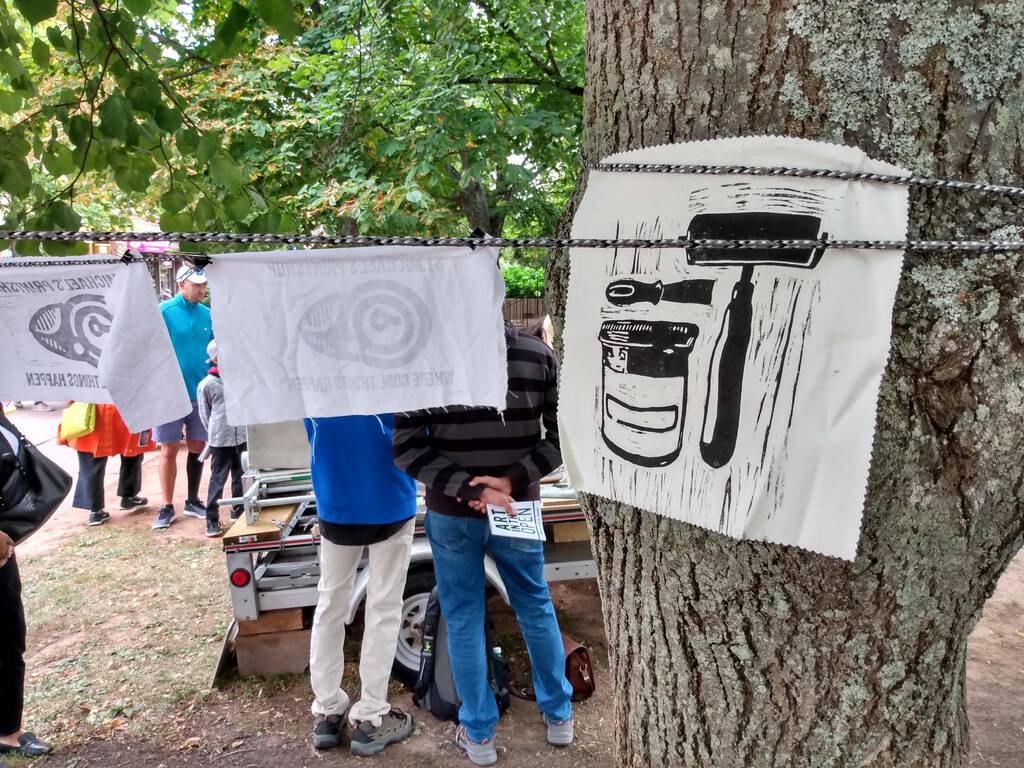
I’m so, so happy with the result. You can come see it on my shop door in St. Paul’s Parish Hall next time you’re near.
The St. Michael’s crew were hard at it for hours last night, a little overwhelmed, I think, by the reception they got to their offer-to-print.
I’ve emerged with a newfound appreciation for my Iberian cousins and a resolve to accelerate my plans, long unfulfilled, to visit Newfoundland and Labrador.
Oliver announced late last week that he planned to participate in the much-vaunted Crow Parade that is the spiritual backbone of Art in the Open every year. As a result, Oliver and Catherine spent much of Friday afternoon crow-costume conjuring.
On Saturday evening, at the appointed hour, I accompanied Oliver to the plaza at Confederation Centre of the Arts for the start of the parade and, when the caw came, I walked along beside him out onto Victoria Row.
As we walked along, I could immediately tell he was agitated. This was something of a feat, as I rely a lot–I realized last night–on Oliver’s facial expressions and body language to tell how he’s feeling, and, as he was dressed like a crow, I didn’t have this to go on.
Using all of my fatherly powers, however, and with Oliver reaching deep into himself to help, he managed to communicate that he was anxious and angry about not having any other crows to walk with (in previous year’s he’d been accompanied by Catherine, or by Derrick both of whom, being more game than I, walked with him in their own full crow regalia; I was not dressed like a crow).
Nearing the intersection of Queen Street, exacerbated by noise and claustrophobia and scads of people taking photos, Oliver tipped over the edge and got really, really frustrated, to the point where I thought we’d need to exit the parade and head home. But Oliver insisted that we forge on, albeit in an angry fugue that I knew wasn’t sustainable.
It was at this point that I spotted crow Tony Reddin walking along beside us.
“Tony, would it be okay if Oliver walked along with you?”, I asked.
“Sure!”, cawed Tony-crow.
And so Oliver left my side, aligned himself with Tony, and happily walked the rest of the parade route at his side.
Here they are making their way along the Victoria Park roadway (Tony in the brightly-coloured feathers, Oliver to his right):
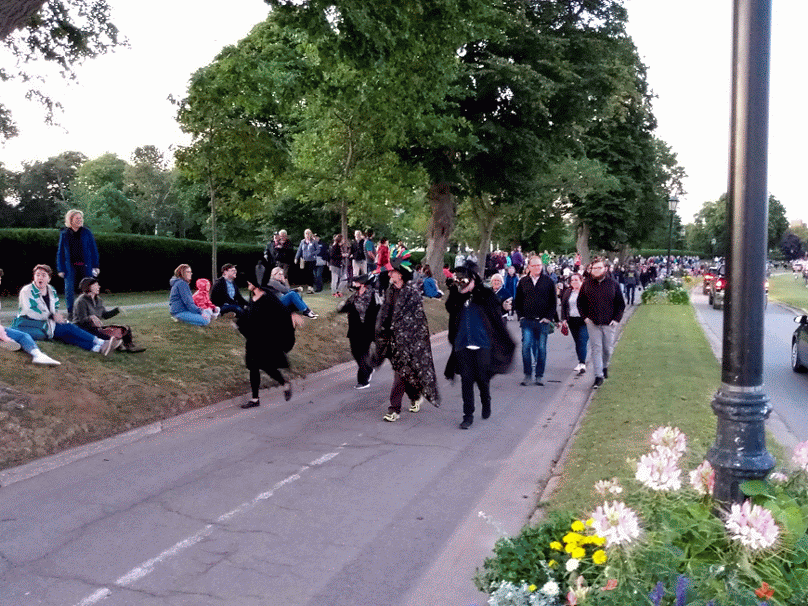
I can’t imagine anyone better to come across in our moment of need than Tony: he is among the kindest and most welcoming people you’ll ever meet, and he welcomed Oliver into his murder as a partner in crime.
Here they are, at the end of the parade, side by side in front of the gathered crows:
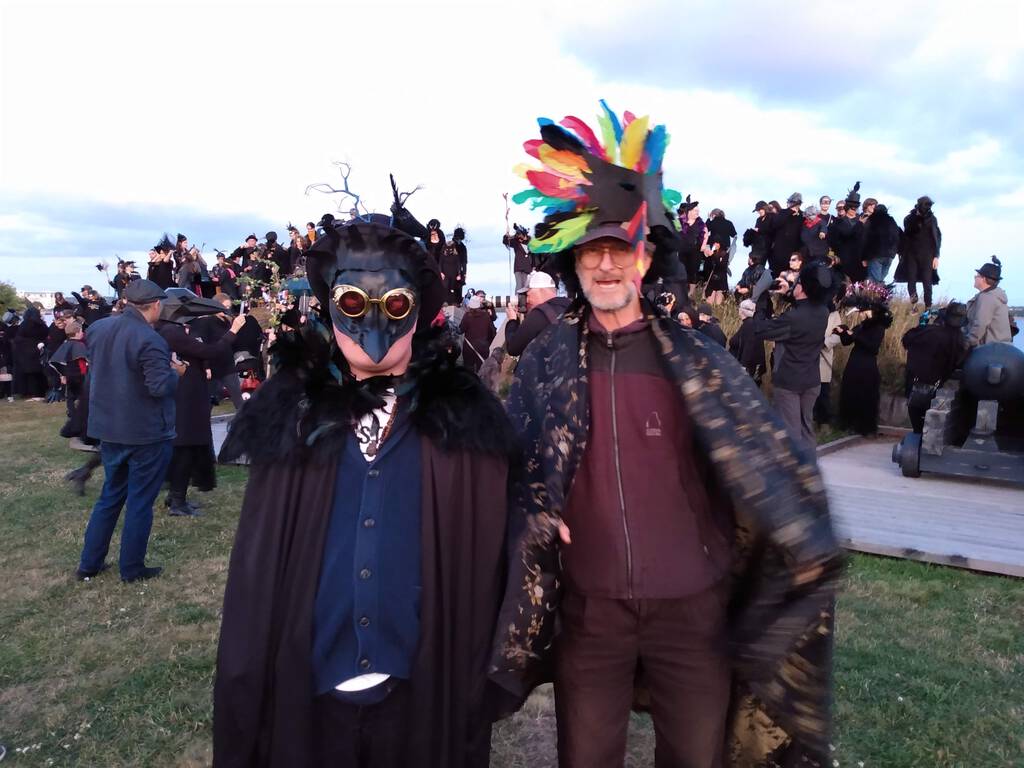
Thank you, Tony, for your crowmanity.
Although my business card says “writer, printer, developer,” a more accurate description you could give to me, given my myriad pursuits, is “reverse engineer.”
My only skill, really, is being able to look at systems, understand their moving parts, and rearrange, reconfigure, adapt, interject, extend, explain.
By lucky happenstance this happens to be a good skill to have for helping to interpret the world to an autistic son: over my parenting years I’ve been able to help him understand complicated systems like “friendship” and “small talk” and “personal space.” Often, in helping him, I come to understand these systems more myself.
This summer the complicated system I’ve been helping him parse is bicycling, and today he leveled up more than once, sometimes on his own, and sometimes with my help:
- He figured out on his own that if he shifts in to 6th gear he can go really, really fast. But that this takes more effort and requires more frequent water breaks.
- He learned, with my help, that if you are approaching a stop sign it’s better to stop pedaling and slow down by coasting for a bit (as opposed to slamming on the breaks at the very last moment).
- He realized, at my urging, that it’s possible to cycle in the rain. At least light rain. And that you can dry your seat off with a paper towel to avoid getting a wet bum.
His final learning for the day came after we turned right from Sidney Street to Prince Street at the very end of our morning cycle. Prince Street is a busier street than most, and so I cycled along side him to be able to guide him in and to provide a little bit of a buffer between him and vehicle traffic. Shortly after we made the turn an SUV came along behind us and the driver got frustrated that he couldn’t pass us right away.
Philosophically I’m very much of the “the road belongs to bicycles and we allow other vehicles on as a courtesy” school, which, I realize, is not an approach shared by everyone.
But, still, we delayed this SUV by perhaps 5 to 10 seconds. And yet the driver decided that this was a good time to vent his frustration and lay on the horn.
“And that,” I told Oliver, “is what you call an asshole.”
Assholes are an important thing to understand when learning about bicycling–and about the world in general–for they confound the understanding of systems as predictable. As such they are among the hardest of phenomena to explain and to understand: if we assume that everyone is an asshole, we’d never leave the house; if we assume that nobody is an asshole, then we’re in for trouble.
The best we can do is to cycle–and live–boldly, to greet adversity with love, to assert our right to take up the road, and, when things get really hairy, to retreat and let the assholes go on about their assholing.
I skipped supper last night and attended a meeting of Extinction Rebellion at Trinity United Church.
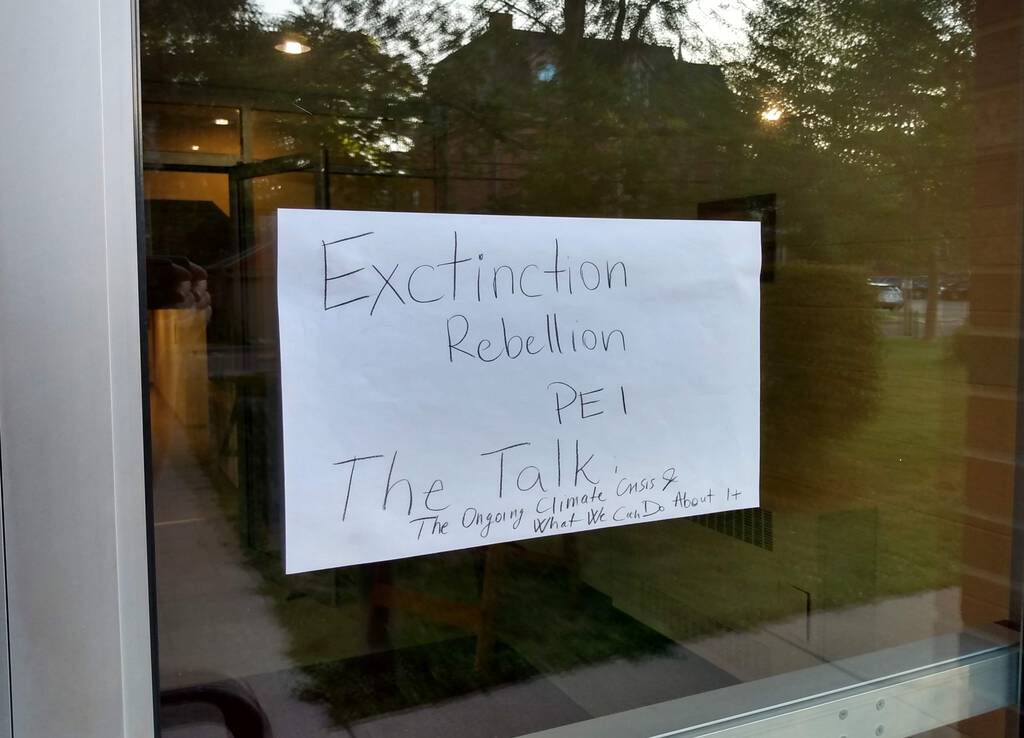
My reason for going was simple: Extinction Rebellion has three demands, one of which is:
Act Now: Government must act now to halt biodiversity loss and reduce greenhouse gas emissions to net zero by 2025.
I wanted to find out more about how they propose to do that.
The current timetable here on PEI is to be net zero by 2050, far enough away so that it’s possible to have “TBD” as a placeholder for a substantial part of our Climate Action Plan. If there’s a way of getting there in 5 years instead of 30, I want to know what it is, and get right on it.
Those answers were not forthcoming.
What emerged was that Extinction Rebellion is as much about responding to a mental health crisis as it is about responding to a climate crisis, and last night’s meeting was much more about the former than the later.
The mental health challenges of having insight into a global catastrophe while the world sits idly by, as though nothing’s happening, is not completely unexplored terrain: anyone who lived through the 1960s and 1970s, and the ever-present fear of imminent nuclear war, can recognize the phenomenon. And the feelings.
I emerged from last night’s meeting realizing that, while I share the underlying scientific concerns of Extinction Rebellion, I am not one of them.
For the time being I want to focus my energies on insulating my house and getting cycle paths built, not stopping traffic on bridges.
At the same time, I was confronted with a group of people with unusually fine-tuned empathy; spiritual canaries in the climate crisis coal mine, so to speak.
And that, to my mind, is reason enough to pay attention to Extinction Rebellion: they are grappling with the psychological effects of climate crisis, and this is something we’re all going to have to come to terms with, sooner than later.
To understand more about our near-future selves, to understand more about the stresses we are all under from the cognitive dissonance of living one way while logic dictates we live another, to see what happens when remorse and anger and confusion and planetary grief boil over into direct action, we should look to our Extinction Rebellion forerunners.

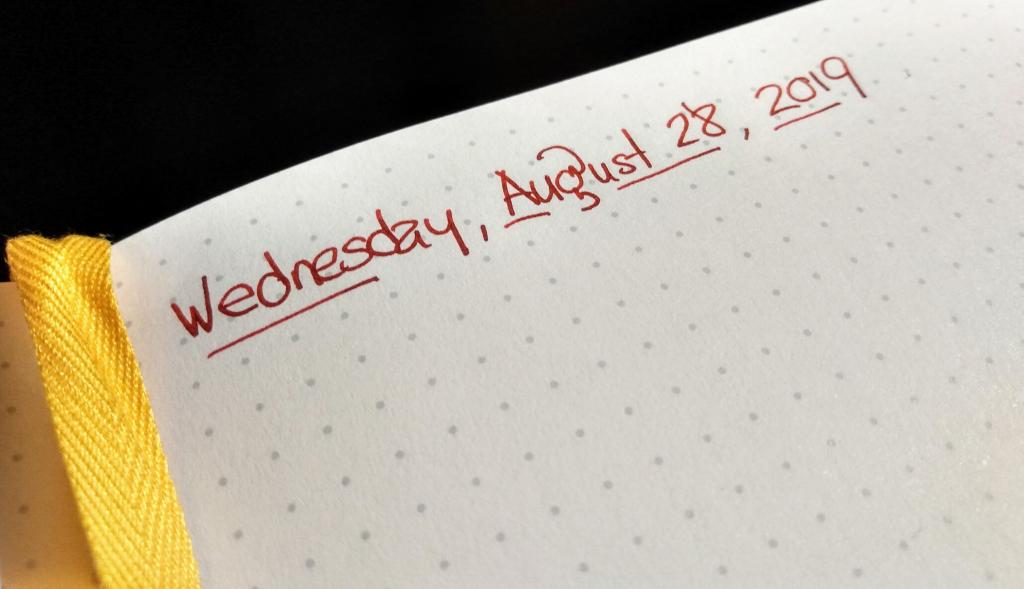
 I am
I am